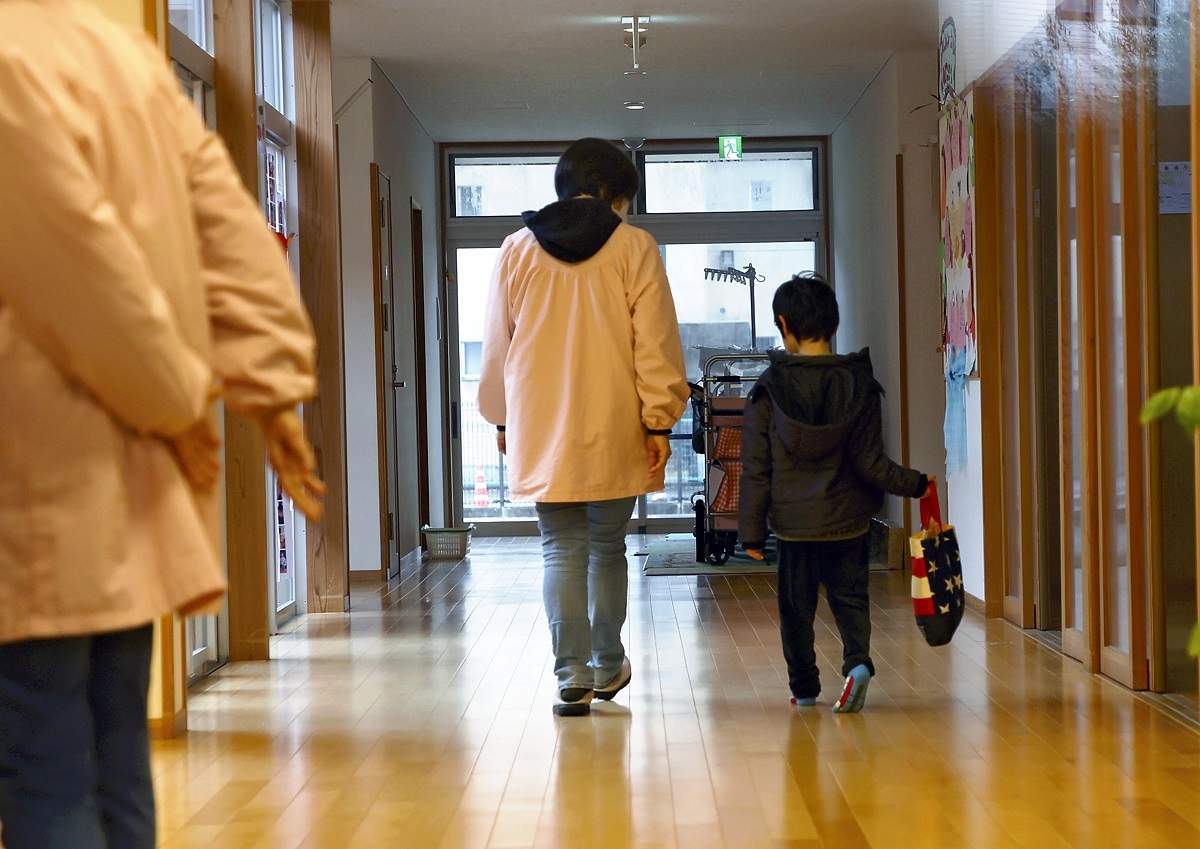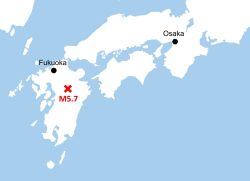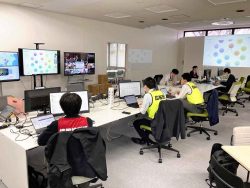Japan to Assist Child-Rearing Facilities in Underpopulated Areas; Aims to Give Them Multipurpose Functions

A mother and child attend a nursery school in Wajima, Ishikawa Prefecture.
12:17 JST, September 29, 2024
The Children and Families Agency plans to help child-rearing facilities in underpopulated areas with decreasing birth rates turn themselves into facilities with multipurpose functions, according to officials.
The aim is to maintain child-rearing facilities with the number of children seriously below quota by consolidating them with after-school childcare centers and child-rearing counseling counters.
The agency plans to provide subsidies to relevant local governments starting next fiscal year, the officials said.
According to the agency, the percentage of users against the quota at child-rearing facilities as of April 1 was 91.6% at 334 local governments in urban areas. However, the figure stood at 76.2% at 713 local governments in underpopulated areas, which are suffering from serious population declines and difficult fiscal conditions.
In underpopulated areas, quotas at child-rearing facilities are expected to decline further and they will be increasingly consolidated. But if there are no child-rearing facilities, parents will find it difficult to work without places for their children to be taken care of. This may prompt younger people to leave underpopulated areas, accelerating population declines.
Some local governments have begun efforts to make use of space that was formerly used for nursery schools but became vacant due to declining number of children for after-school childcare and counseling counters for child-rearing.
The agency aims to maintain child-rearing facilities by giving them functions other than nursing services.
Nurseries, certified children centers and small-scale nurseries that are located in underpopulated areas whose number of users is not expected to increase are subject to the initiative. They also have to be deemed essential for the continuation and development of their respective areas.
The agency plans to provide up to ¥10 million in subsidies per local government. Local governments in the northern part of the Noto Peninsula that were affected by the major earthquake on New Year’s Day will receive an additional ¥5 million in subsidies.
The subsidies are expected to be allocated to cover personnel and other expenses that will become necessary to make existing facilities have multipurpose functions. With a view to Japan’s aging society, the facilities are also envisaged to assist elderly residents, such as helping them go shopping. The subsidies may also be used to open cafeterias that provide free or inexpensive meals to children who cannot get enough food at home. However, newly built facilities will not be subject to the subsidies.
"Society" POPULAR ARTICLE
-

M4.9 Earthquake Hits Tokyo, Neighboring Prefectures
-

M7.5 Earthquake Hits Northern Japan; Tsunami Waves Observed in Hokkaido, Aomori and Iwate Prefectures
-

Tsukiji Market Urges Tourists to Avoid Visiting in Year-End
-

Israeli Tourists Refused Accommodation at Hotel in Japan’s Nagano Pref., Prompting Protest by Israeli Embassy and Probe by Prefecture
-

M5.7 Earthquake Hits Japan’s Kumamoto Pref., Measuring Upper 5 Intensity, No Tsunami Expected
JN ACCESS RANKING
-

Keidanren Chairman Yoshinobu Tsutsui Visits Kashiwazaki-Kariwa Nuclear Power Plant; Inspects New Emergency Safety System
-

Imports of Rare Earths from China Facing Delays, May Be Caused by Deterioration of Japan-China Relations
-

University of Tokyo Professor Discusses Japanese Economic Security in Interview Ahead of Forum
-

Japan Pulls out of Vietnam Nuclear Project, Complicating Hanoi’s Power Plans
-

Govt Aims to Expand NISA Program Lineup, Abolish Age Restriction






















